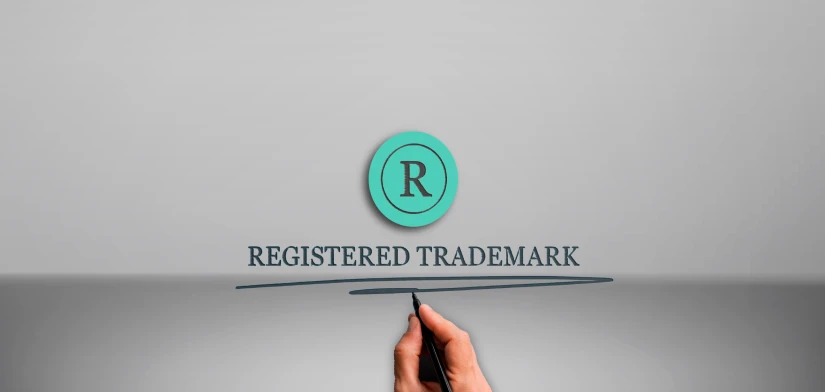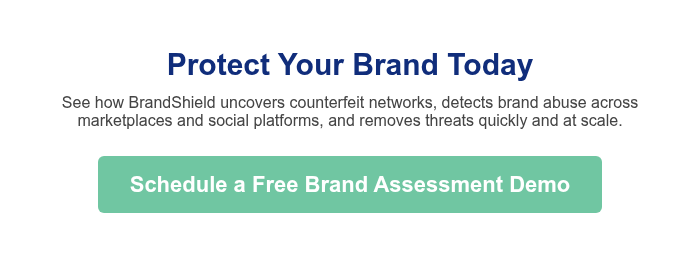What is Trademark Infringement and How to Protect Against It
Trademark infringement and trademark violation are rising threats in today’s hyperconnected digital world. It’s not just about stolen logos or copied slogans—bad actors are actively impersonating brands online, hijacking their reputation, and misleading customers through counterfeit products, fake websites, and fraudulent ads. Whether you’re in eCommerce, healthcare, or tech, ignoring this risk is no longer an option.
If your business has a name, a product, or a logo, it has something worth stealing. And if you’re not actively protecting your trademark, you’re leaving your brand exposed to growing digital abuse.
This article breaks down what trademark infringement and trademark violations really mean, how they happen, and the practical steps you can take to protect your brand in 2026 and beyond.
What Is Trademark Infringement?
Trademark infringement refers to the unauthorized use of a registered trademark or a mark that’s confusingly similar to a registered one. This use can mislead consumers into believing there’s a connection between the infringing product or service and the original brand. In legal terms, trademark infringement is a form of trademark violation, and it applies whether the infringement was intentional or accidental.
Infringement typically involves names, logos, slogans, product packaging, or even domain names. The key factor is consumer confusion—if a typical buyer could reasonably mistake the copycat for the original, it qualifies as infringement.
The Difference Between Trademark Infringement and Trademark Violation
While often used interchangeably, trademark infringement typically refers to direct, unauthorized use of protected trademarks, while trademark violation is a broader term. Violation may include misuse of the brand in misleading advertising, domain squatting, impersonation on social media, or false affiliations. Both threaten your intellectual property and your reputation.
Common Examples of Trademark Violations
Trademark abuse manifests in several forms, especially online. Here are some of the most frequent types of violations:
-
Copycat logos or brand names on competing websites to divert traffic or sales.
-
Counterfeit products listed under your brand name on marketplaces like Amazon, eBay, or Alibaba.
-
Phishing websites using your brand’s look and feel to collect user data or commit fraud.
-
Fake social media profiles posing as your brand to mislead customers or push scams.
-
Trademarked keywords misused in paid ads to redirect traffic away from your business.
These activities not only confuse customers but also degrade your brand’s trust, reputation, and revenue.
Why Trademark Infringement Hurts Your Business
The cost of trademark infringement goes far beyond lost sales. When consumers encounter fake products or impersonated websites, they associate the negative experience with your brand. That damage compounds over time.
Worse, in regulated industries—such as pharmaceuticals, finance, or consumer electronics—trademark abuse can lead to legal liabilities, safety issues, or regulatory scrutiny. Even a single counterfeit incident can undermine years of brand-building.
Unchecked trademark violations also erode your competitive advantage. If you’re investing in product development, customer service, and marketing—while others are freely capitalizing on your brand equity—you’re fighting an uphill battle.
How to Protect Your Brand from Trademark Violations
Trademark enforcement is no longer just a legal task. It requires a combination of legal protection, proactive monitoring, intelligent automation, and human oversight. Here are the steps every business should take:
1. Register Your Trademarks Globally
Trademark protection starts with legal registration. Register your trademarks—logos, brand names, slogans, packaging—with the relevant intellectual property offices in all key markets where you operate or plan to expand.
A registered trademark gives you the legal standing to pursue violators in court and issue takedown requests on major platforms.
2. Monitor for Trademark Violations in Real Time
Many trademark violations occur where you least expect them—on obscure domains, foreign marketplaces, or newly created social media accounts. Manual monitoring is insufficient.
Instead, deploy a brand protection platform that uses machine learning and AI to scan across digital channels, flagging potential infringements early and at scale.
3. Take Swift Enforcement Action
Once a trademark violation is detected, act immediately. Depending on the channel, this may involve:
-
Sending cease-and-desist letters
-
Filing DMCA takedown notices
-
Submitting removal requests to social media platforms, marketplaces, or registrars
-
Escalating to legal action if necessary
Speed matters. The faster you act, the less damage a bad actor can inflict.
4. Educate Internal Teams and Customers
Your employees and customers are the first line of defense. Train internal teams to recognize and report suspicious content. At the same time, inform customers about your official channels, domains, and product listings. Encourage them to report fakes and scams directly.
5. Invest in AI-Powered Brand Protection
Today’s threats require today’s tools. Leading digital brand protection platforms like BrandShield offer real-time trademark enforcement using AI. These systems detect patterns across impersonation networks, phishing campaigns, and counterfeit sellers.
BrandShield’s AI identifies threats. Then, human analysts verify, prioritize, and take them down. This hybrid model delivers accurate, efficient protection without drowning in false positives.
Final Thoughts
Trademark infringement and trademark violations are no longer fringe issues—they are core business risks. If you’re not actively enforcing your trademarks across digital channels, you’re vulnerable to losing customer trust, market share, and revenue.
The solution is layered: legal registration, automated monitoring, expert enforcement, and customer education. And for companies looking to scale protection across borders and platforms, solutions like BrandShield offer the intelligence and reach required to keep your brand secure.
Protecting your trademark isn’t just about avoiding legal headaches. It’s about defending the brand you’ve worked so hard to build.
FAQ: Trademark Infringement and Violation
What qualifies as a trademark violation?
A trademark violation includes any unauthorized use of a brand’s registered trademarks, including names, logos, or design elements, in a way that misleads or confuses consumers. This includes direct infringements, domain squatting, phishing, or misusing brand names in ads.
Is trademark infringement the same as trademark violation?
Not exactly. Trademark infringement is a form of trademark violation. Infringement usually refers to direct unauthorized use, while violation is a broader term that includes impersonation, misuse in advertising, and other digital abuse.
How can I tell if someone is infringing on my trademark?
Look for unauthorized use of your brand’s name, logo, or product likeness. This may appear in counterfeit products, fake social media accounts, phishing websites, or misleading paid ads. Regular monitoring and specialized tools can help detect these issues early.
What should I do if I find a trademark violation online?
Document the violation, collect evidence (screenshots, URLs, etc.), and act quickly. Issue a takedown request or cease-and-desist letter, and escalate to legal action if necessary. Using a digital brand protection provider can speed up the process.
Do I need to register a trademark to take action?
While you can enforce rights based on common law in some regions, a registered trademark significantly strengthens your legal position and allows for faster takedown requests and legal remedies.
How does BrandShield help with trademark enforcement?
BrandShield offers AI-powered monitoring across domains, social media, and marketplaces. It detects infringements in real-time and supports removal actions. Its analysts validate threats to avoid false positives and ensure accurate enforcement.

